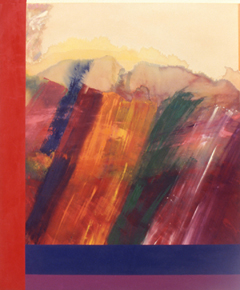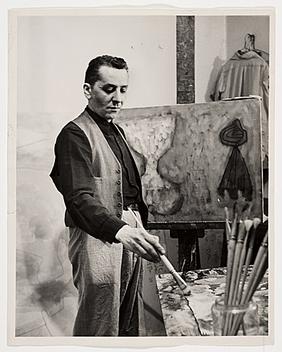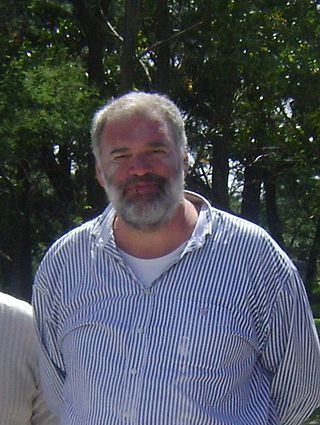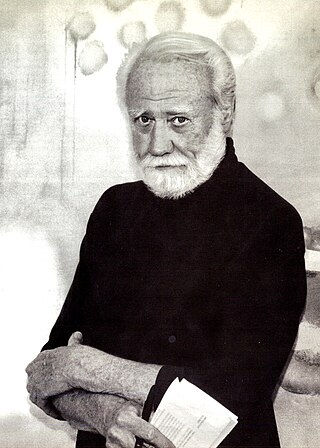
Stanton Macdonald-Wright, was a modern American artist. He was a co-founder of Synchromism, an early abstract, color-based mode of painting, which was the first American avant-garde art movement to receive international attention.

Alexander Porfyrovych Archipenko was a Ukrainian-American avant-garde artist, sculptor, and graphic artist, active in France and the United States. He was one of the first to apply the principles of Cubism to architecture, analyzing human figures into geometrical forms.

Max Weber was a Jewish-American painter and one of the first American Cubist painters who, in later life, turned to more figurative Jewish themes in his art. He is best known today for Chinese Restaurant (1915), in the collection of the Whitney Museum of American Art, "the finest canvas of his Cubist phase," in the words of art historian Avis Berman.

Frederick Carl Frieseke was an American Impressionist painter who spent most of his life as an expatriate in France. An influential member of the Giverny art colony, his paintings often concentrated on various effects of dappled sunlight.

Synchromism was an art movement founded in 1912 by American artists Stanton Macdonald-Wright (1890–1973) and Morgan Russell (1886–1953). Their abstract "synchromies," based on an approach to painting that analogized color to music, were among the first abstract paintings in American art. Though it was short-lived and did not attract many adherents, Synchromism became the first American avant-garde art movement to receive international attention. One of the difficulties inherent in describing Synchromism as a coherent style is connected to the fact that some Synchromist works are purely abstract while others include representational imagery.

John Marin was an early American modernist artist. He is known for his abstract landscapes and watercolors.

Daniel Garber was an American Impressionist landscape painter and member of the art colony at New Hope, Pennsylvania. He is best known today for his large impressionist scenes of the New Hope area, in which he often depicted the Delaware River. He also painted figurative interior works and excelled at etching. In addition to his painting career, Garber taught art at the Pennsylvania Academy of the Fine Arts for over forty years.

Arthur Beecher Carles was an American Modernist painter.

Ronnie Landfield is an American abstract painter. During his early career from the mid-1960s through the 1970s his paintings were associated with Lyrical Abstraction, and he was represented by the David Whitney Gallery and the André Emmerich Gallery.

William Baziotes was an American painter influenced by Surrealism and was a contributor to Abstract Expressionism.

Edward Middleton Manigault was a Canadian-born American Modernist painter.

Conrad Marca-Relli was an American artist who belonged to the early generation of New York School Abstract Expressionist artists whose artistic innovation by the 1950s had been recognized across the Atlantic, including Paris. New York School Abstract Expressionism, represented by Jackson Pollock, Willem de Kooning, Franz Kline, Robert Motherwell, John Ferren, Marca-Relli and others became a leading art movement of the postwar era.

Theodoros Stamos was a Greek-American painter. He is one of the youngest painters of the original group of abstract expressionist painters, which included Jackson Pollock, Willem de Kooning and Mark Rothko. His later years were negatively affected by his involvement with the Rothko case.

Knox Martin was an American painter, sculptor, and muralist.

Pablo Atchugarry is a Uruguayan artist, best known for his abstract sculptural art. His works are included in many major collections, both private and public, and he has held more than one hundred solo and collective exhibitions worldwide.
Myra Bairstow is an American writer and independent art scholar and curator. She was the co-author and director of the Manierre Dawson Catalogue Raisonné in collaboration with the Hollis Taggart Galleries published in 2011. Bairstow's curatorial exhibitions with the Taggart Galleries include "Manierre Dawson: American Pioneer of Abstract Art", "Manierre Dawson: New Revelations" (Chicago) and "Manierre Dawson" A Catalogue Raisonné.

Paul Kelpe was a German-born American abstract painter. His constructions integrating found objects into paintings were the first such works created in the United States and he painted two of the five Williamsburg murals, the first abstract murals in the United States. In addition to his mural work for various American government projects, he was an innovative independent painter and university art professor. He was a pioneer of American abstract art, including his work in Chicago during a period in which abstracts were not well accepted or appreciated.

William Scharf was an American abstract artist from New York City.

William Edward Bloomfield Starkweather was a painter, teacher, and writer, known for impressionist landscape paintings and book illustrations. He is also known for his research and writings on other painters, and was at one time considered "one of the greatest authorities on Goya".
Bill Scott is a contemporary abstract painter and printmaker who works and lives in Philadelphia. Scott studied painting at the Pennsylvania Academy of the Fine Arts from rom 1974 to 1979, and with the painter Jane Piper (1916–1991).


















